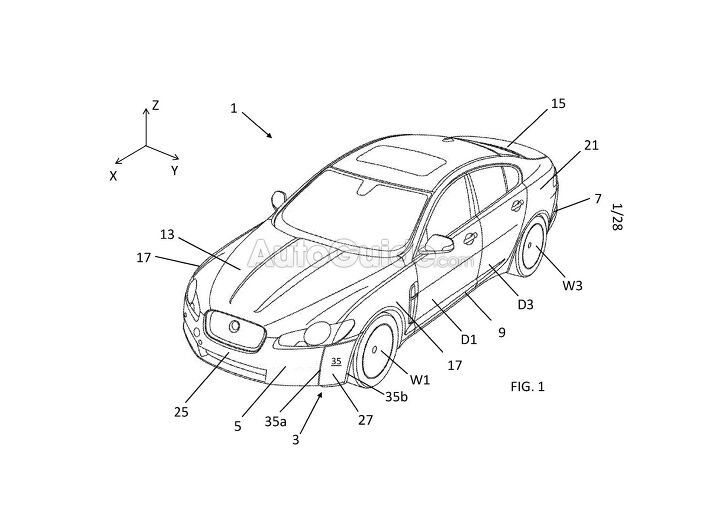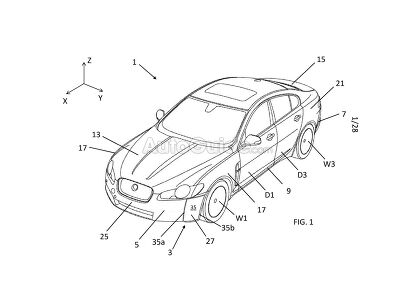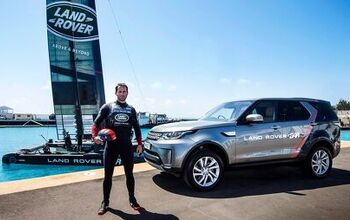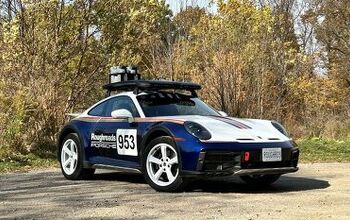Jaguar Land Rover is the Latest to Patent an Active Aero System

Jaguar Land Rover is the latest automaker to patent an active aerodynamics system, though the British brand’s concept of adaptable aerodynamics is unique.
A recently published application in the U.K. details what the British automaker is calling a “vehicle aerodynamic apparatus,” and it’s quite different than existing active aero systems. Chevy recently patented an active aero system, but the American automaker is going after speed and handling for its sports car, while JLR seems to be more interested in fuel efficiency.
In the patent application, Jaguar Land Rover explains how the drag of the rear-facing surfaces of a car can account for upwards of 30 percent of the total drag. A traditional way of combating this is “boat tailing,” a styling cue which sees the rear end of a vehicle taper inwards vertically and horizontally.
But as Jaguar Land Rover explains, aesthetic and packaging considerations limit its applicability in automotive design, as not all designs fit with this tapered rear end look.
The company hopes to change that with its active aero system, which essentially allows a vehicle’s rear end to squeeze in a small amount to create a natural boat tail. The patent application also details air inlet openings formed in vertical fins that would direct air over an outer skin of a rear deck lid and onto a rear air deflection device.
SEE ALSO: Jaguar XS Trademark Hints at Possible XJ Replacement
Although the active aero system would benefit Land Rover’s large SUVs like the Range Rover, the patent application also includes images of the system being applied to Jaguar’s sedans. It’s likely the British automaker would use the technology across all its vehicles, aiding in aerodynamics and improving fuel efficiency.
The patent is clearly focused on improving efficiency, but as the Lamborghini Huracan Performante has shown, active aero could certainly improve the performance of Jaguar’s sports cars, like the F-Type. We’ll have to wait and see if the brand tries to use this technology to make its performance cars quicker at the race track.
The only real bad news is that according to Jaguar, this active aero system won’t be something that makes it to production for a long while.
Discuss this story on our Land Rover Forum

Jason Siu began his career in automotive journalism in 2003 with Modified Magazine, a property previously held by VerticalScope. As the West Coast Editor, he played a pivotal role while also extending his expertise to Modified Luxury & Exotics and Modified Mustangs. Beyond his editorial work, Jason authored two notable Cartech books. His tenure at AutoGuide.com saw him immersed in the daily news cycle, yet his passion for hands-on evaluation led him to focus on testing and product reviews, offering well-rounded recommendations to AutoGuide readers. Currently, as the Content Director for VerticalScope, Jason spearheads the content strategy for an array of online publications, a role that has him at the helm of ensuring quality and consistency across the board.
More by Jason Siu




























































Comments
Join the conversation